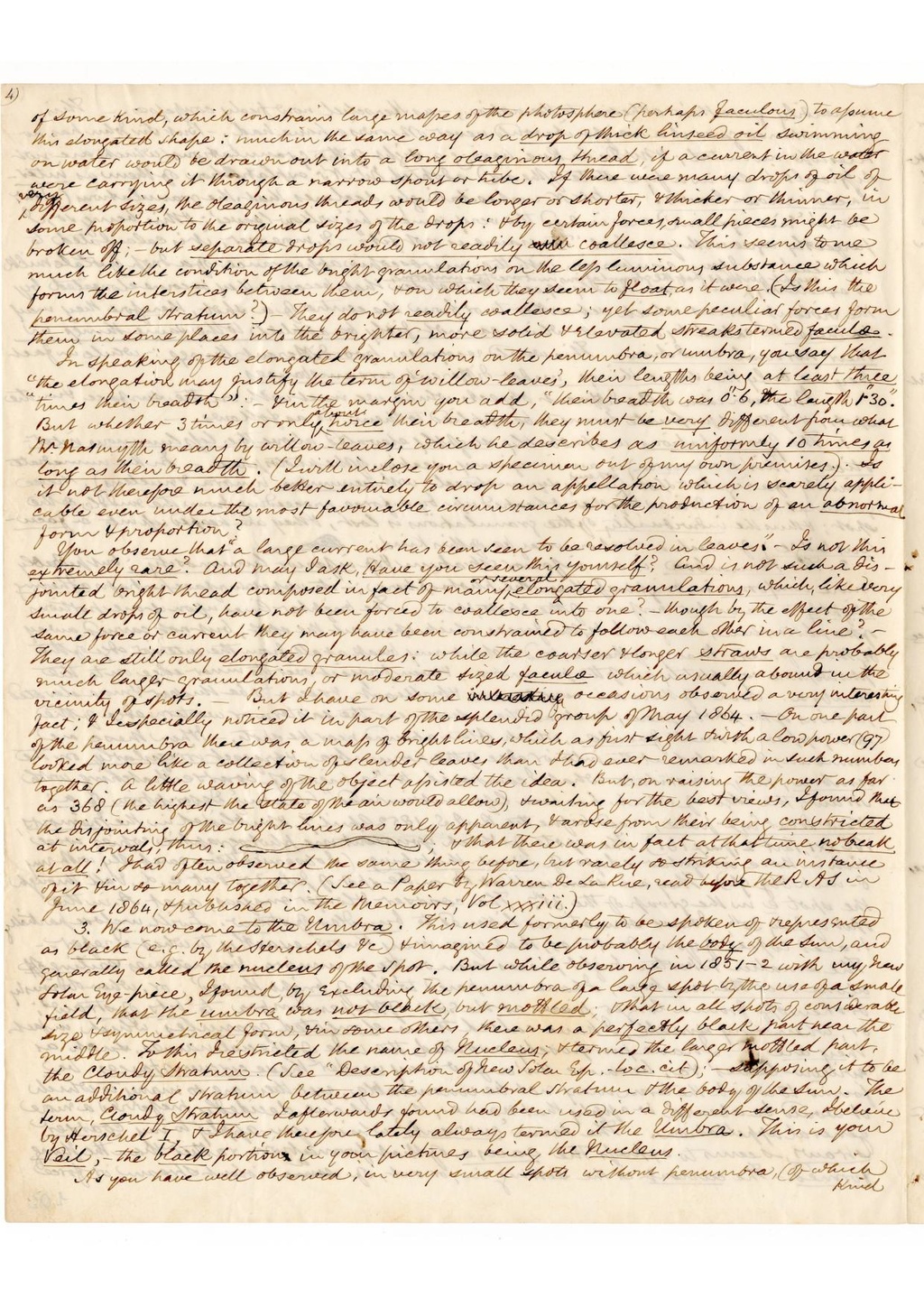of some kind, which constrains large masses of the photosphere (perhaps faculous) to assume
this elongated shape: much in the same way as a drop of thick linseed oil swimming
on water would be drawn out into a long oleaginous thread, if a current in the water
were carrying it through a narrow spout or tube. If there were many drops of oil of
very different sizes, the oleaginous threads would be longer or shorter, and thicker or thinner, in
some proportion to the original sizes of the drops: and by certain forces, small pieces might be
broken off; - but separate drops would not readily coallesce. This seems to me
much like the condition of the bright granulations on the less luminous substance which
forms the interstices between them, and on which they seem to float, as it were. (Is this the
penumbral stratum?) - They do not readily coallesce; yet some peculiar forces form
them in some places into the brighter, more solid and elevated streaks termed facula.
In speaking of the elongated granulations on the penumbra, or umbra, you say that
"the elongation may justify the term of 'willow-leaves', their lengths being at least three
times their breadth": - and in the margin you add, "their breadth was 0"·6, the length 1"·30".
But whether 3 times
Page:ASC 1865 09 06 13-52.pdf/4
From GATE
Revision as of 18:40, 19 September 2020 by Maria Sermersheim (talk | contribs)
This page has not been proofread
